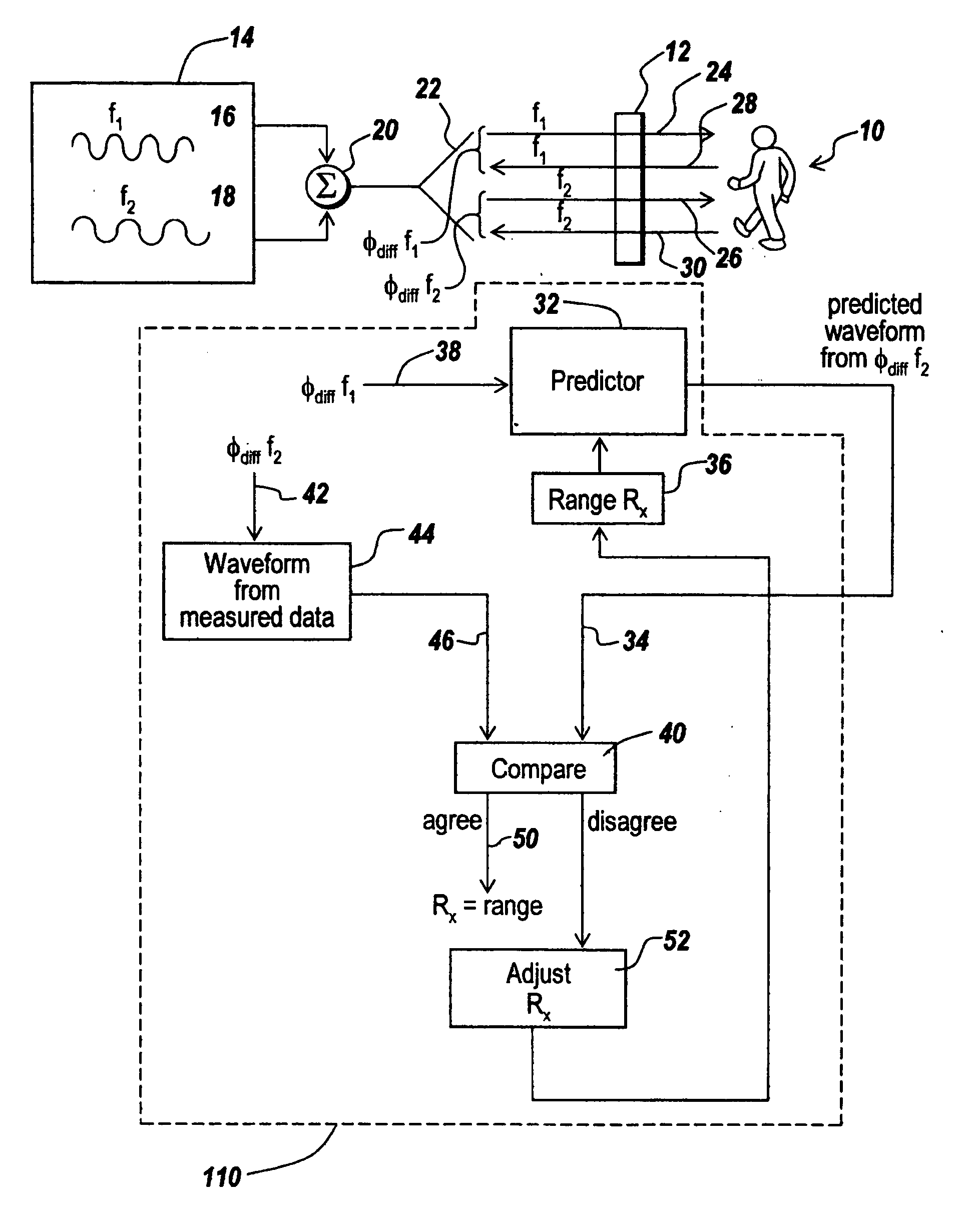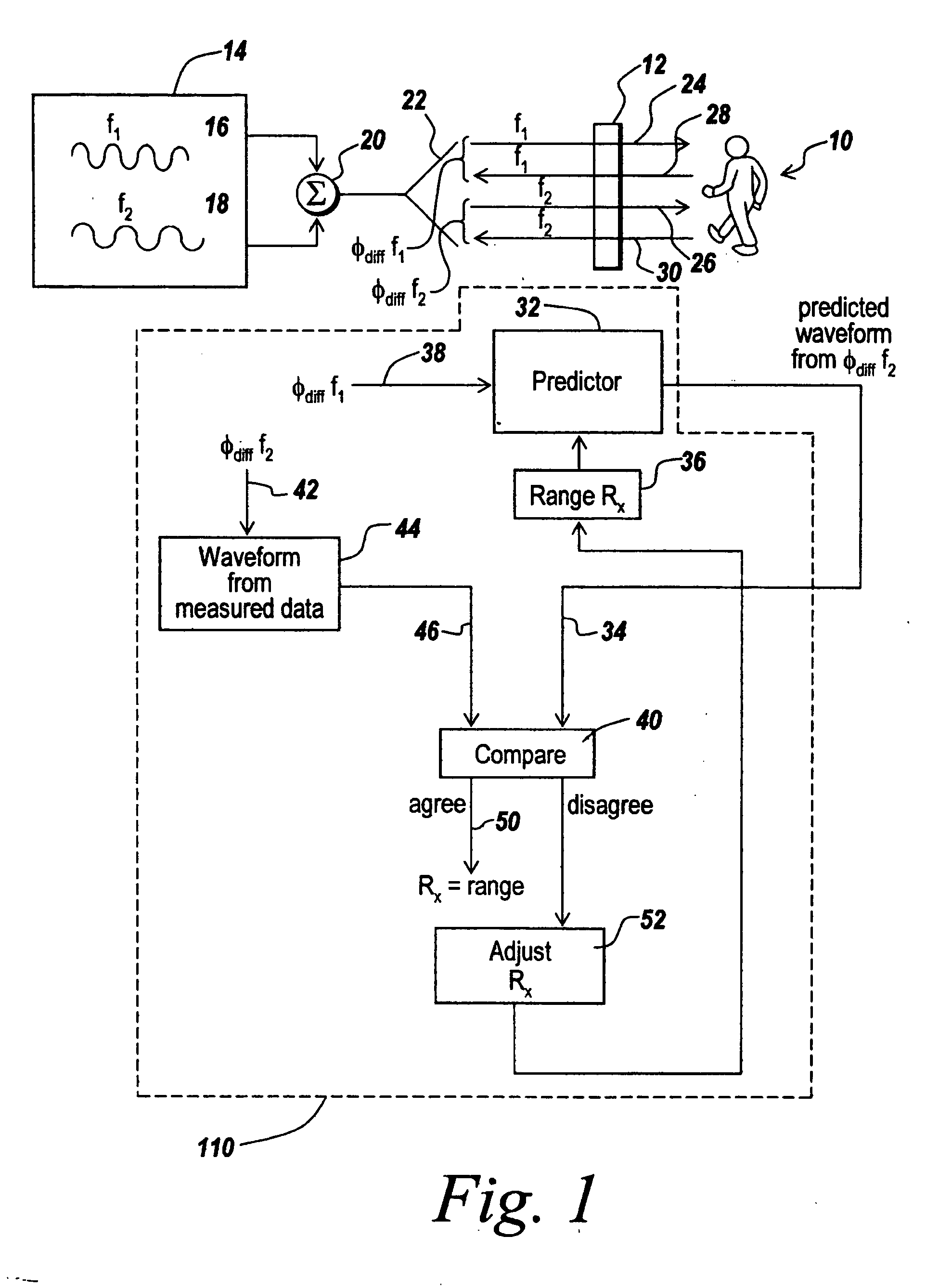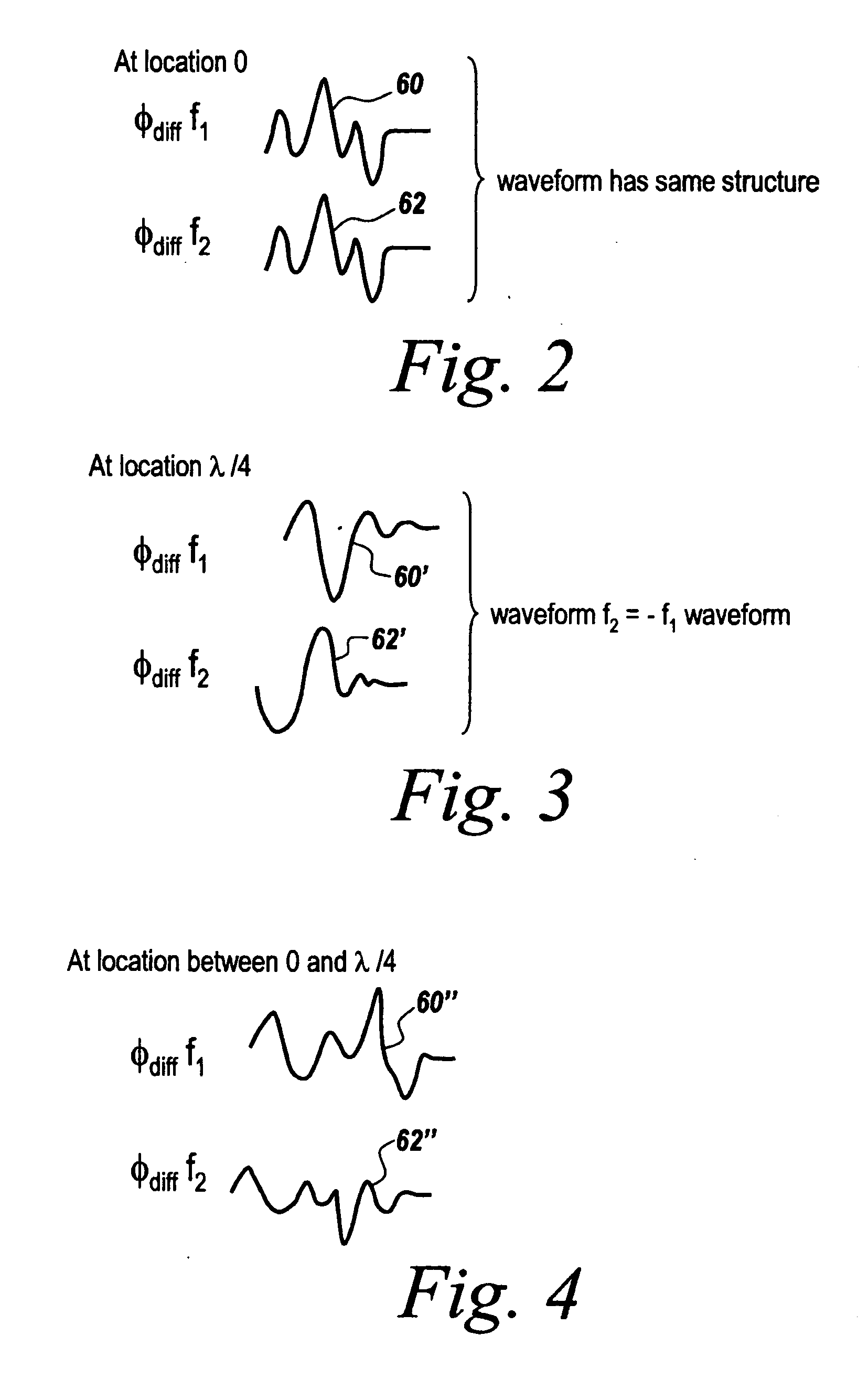Through-the-wall frequency stepped imaging system utilizing near field multiple antenna positions, clutter rejection and corrections for frequency dependent wall effects
a frequency stepped imaging and near field multiple antenna technology, applied in direction finders, instruments, measurement devices, etc., to achieve the effect of improving the resolution of a two-tone cw radar, increasing the accuracy obtainable, and improving the resolution
- Summary
- Abstract
- Description
- Claims
- Application Information
AI Technical Summary
Benefits of technology
Problems solved by technology
Method used
Image
Examples
Embodiment Construction
Multi-Tone CW Radar
[0043] To describe the operation of the multi-tone CW radar used in the subject invention, it was found that for an object exhibiting constant motion or velocity the phase shift between the two waveforms representing the phase difference between transmitted and returned waves for the two tones or frequencies is directly related to range. This is because comparing waveforms corresponding to the phase difference between the outgoing and incoming waves at the two frequencies results in a relationship between the phase shift between the two waveforms and range. For instance, at zero range there is no difference in phase between the two waveforms. At a range equal to λ / 4 one has a 180° phase shift between the two waveforms. In between, for constant motion objects there is a linear relationship between phase shift and range such that by measuring phase shift between the two waveforms one can deduce range. Here λ is the wavelength associated with the difference in f1 an...
PUM
 Login to View More
Login to View More Abstract
Description
Claims
Application Information
 Login to View More
Login to View More - R&D
- Intellectual Property
- Life Sciences
- Materials
- Tech Scout
- Unparalleled Data Quality
- Higher Quality Content
- 60% Fewer Hallucinations
Browse by: Latest US Patents, China's latest patents, Technical Efficacy Thesaurus, Application Domain, Technology Topic, Popular Technical Reports.
© 2025 PatSnap. All rights reserved.Legal|Privacy policy|Modern Slavery Act Transparency Statement|Sitemap|About US| Contact US: help@patsnap.com



